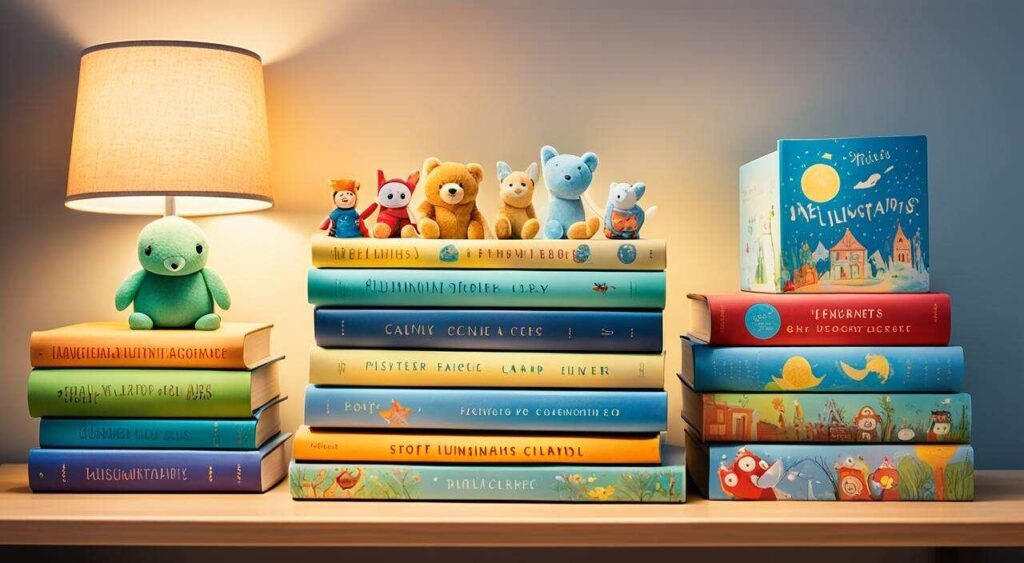As parents and educators, our goal is to help kids understand the world. We aim to boost their cognitive development and emotional intelligence. This makes them more resilient and better at solving problems. We’ll look at ways to help children question and understand the reasons behind different scenarios.
We will share advice that adjusts to kids’ different ages. This includes using active listening and storytelling. We’ll explain how hands-on activities can spark their curiosity. This helps children learn how to figure out the world.
As a parent, teacher, or caregiver, you will gain insights from this article. We’ll offer parenting techniques and effective communication strategies. These are for helping kids understand everyday events, big ideas, and hard feelings. With the right understanding, we can help kids reach their full potential and succeed in the future.
Key Takeaways
- Develop effective communication techniques to help kids understand the “why” behind things.
- Utilize active listening, age-appropriate explanations, and problem-solving guidance to foster cognitive and emotional intelligence.
- Incorporate storytelling, hands-on activities, and positive reinforcement to make learning engaging and relatable.
- Empower children to become confident, independent problem-solvers by modeling effective strategies.
- Celebrate small successes and maintain consistency to build children’s resilience and understanding.
Fostering Understanding Through Active Listening
Active listening helps children feel truly understood. By validating and naming their emotions, we help them handle tough feelings. This is key for boosting their emotional intelligence and problem-solving skills.
Validate and Name Emotions
Kids need to know their feelings matter. When they share, repeat back what they say, showing you get them. This validation makes them feel known and supported.
Guide Children to Process Emotions
Using active listening, we can then help kids deal with their feelings. We can ask them to talk about it, draw, or act out how they feel. This gives them a good way to let emotions out.
Encourage Problem-Solving and Brainstorming
After we’ve listened, it’s time to help them find solutions. We can brainstorm together. This helps kids think critically and feel they have the power to change things.
How do you make kids understand why?
Explaining things in a way that fits their age is key. It makes complex ideas easy to understand. Using examples from their everyday life helps make learning fun and relatable.
Asking kids open-ended questions is important too. It makes them think and share what they know. This way, we can see if they understand well or if they need more help.
Talking to kids in a way they understand works. Adding real-life examples and open questions makes learning enjoyable. This way, we help kids really get the why behind what they’re learning.
Developing Cognitive and Emotional Intelligence
Parents and teachers play a key role in helping kids understand the world. They can do this by talking through their own problem-solving steps. This shows children how to think through complex issues, encouraging a growth mindset.
Model Effective Problem-Solving
When a challenge comes up, adults should think out loud. They show how problem-solving connects with understanding feelings and controlling emotions. This helps children build their own problem-solving skills and emotional intelligence.
Encourage Creative Play and Crafts
Letting kids have creative play and do hands-on activities boosts their cognitive development and emotional intelligence. From building with blocks to making crafts, they learn in a fun, safe way. This helps them gain confidence and the ability to deal with problems.
| Cognitive Development | Emotional Intelligence |
|---|---|
| Improved problem-solving skills | Enhanced self-awareness and regulation |
| Increased creativity and innovation | Stronger empathy and social skills |
| Better critical thinking and reasoning | Heightened resilience and adaptability |
By focusing on cognitive development and emotional intelligence together, adults can help children thrive. This approach helps them understand the complex world better.
Teaching Problem-Solving Skills
Teaching kids how to solve problems is vital. It helps them face challenges with confidence. We show them steps to handle issues, giving them a clear path forward.
Break Down the Problem-Solving Process
First, we teach children problem-solving basics. This includes looking at the problem, finding possible solutions, and thinking about the results of each option. We also teach them to try different methods and think outside the box.
Role-Play and Practice Scenarios
Role-playing and practicing real-life issues is good for kids. They can learn problem-solving in a fun and supportive way. We give them age-fitting problems and guide them through solving them. This lets them pick up and learn various strategies.
Celebrate Small Successes
It’s key to cheer on kids when they solve problems. We should praise their small wins. This recognition and praise boost their morale and push them to keep trying with tough issues.
Positive Reinforcement and Consequences
Mixing positive reinforcement and appropriate consequences helps shape good behavior in children. It makes them understand the value of their actions. By highlighting the good actions, using consequences that fit what’s happened, and being steady, parents and others can create a positive space. This space encourages good choices but also teaches kids when they’ve made a mistake.
Praise Positive Behavior
It’s key to cheer kids on when they do well. This makes them more likely to repeat the behavior. Maybe they shared their toys, cleaned up without being asked, or said something nice. When you point out these wins, it’s like a little lesson in good behavior.
Implement Natural Consequences
Positive feedback is crucial, but so are natural consequences for bad deeds. These things should fit the action and be given calmly. For instance, a child might have to stop playing with toys if they throw them. This way, they see what comes from making a bad choice.
Be Consistent and Follow Through
Being steady with rewards and consequences is very important. Stick to your plans, even when it’s hard. This tells children you’re serious and that actions have real outcomes. With time, they get why certain rules are in place.
Utilizing Storytelling and Books

Storytelling and children’s books are amazing at helping kids learn important lessons. They can see how characters handle tough situations. And they learn from the smart ways these characters deal with challenges.
Discuss Character Challenges and Solutions
When reading books with your child, stop to chat about the problems the characters face. Talk about the ways they find to fix things. This helps kids get better at solving problems. It also makes them feel for the characters and gets them to remember what they’ve learned.
Encourage Role-Playing and Dialogue Reading
Go a step further by getting your child to act out various roles or read the lines of the characters. This makes the story more real for them. They begin to understand why the characters act as they do. This makes them better at reading and helps them love books more.
Storytelling and children’s books together create a lively, fun world for kids. It helps them learn how to solve problems. And it gives them a better understanding of the world.
Conclusion
This article shows ways to help kids understand the why behind things. Parents can use active listening and age-appropriate explanations. They can also demonstrate how to solve problems and tell stories. These approaches help children grow in cognitive and emotional intelligence. The aim is to make kids confident and independent, capable of handling difficulties wisely.
The top lessons here stress communication and validating feelings. Moreover, it highlights the power of positive reinforcement and engaging learning experiences. These methods aid children in developing skills critical for success today.
Supporting children’s cognitive and emotional growth is key in both parenting and education. Teaching kids to find reasons behind things can lead to a new generation of thinkers. They will be ready to face the future, with skills to tackle its challenges.
FAQ
How can active listening help children feel heard and understood?
Active listening is vital for children to feel they’re heard and understood. This includes acknowledging their feelings and letting them express themselves. Parents can mirror the child’s words, encourage emotional expression, and then find solutions together.
Why is it important to provide age-appropriate explanations for kids?
It’s important to explain things in ways kids can understand. Make complex topics simple and relatable by using real-life examples. Asking kids what they think about the topic helps them develop critical thinking skills.
How can building cognitive and emotional intelligence help kids understand why?
Building cognitive and emotional intelligence helps kids get why things happen. Adults can teach them how to solve problems by showing their own thinking process and supporting creative activities. This way, children can learn problem-solving in a fun setting.
What are the steps in teaching children a structured problem-solving process?
Teaching a problem-solving process involves steps like identifying the problem and brainstorming solutions. Then, considering the outcomes and testing different solutions is key. Role-playing and real-life scenarios help put these steps into practice.
Celebrating their progress boosts their confidence and teaches them not to give up. Building resilience through these steps is important.
How can positive reinforcement and consequences guide children’s behavior and understanding?
Mixing praise with appropriate consequences helps guide children. By praising good actions and connecting consequences to their choices, they understand the impact of their behavior. Consistency is important, as it creates a support system for their lessons.
How can storytelling and children’s books help kids understand why?
Storytelling and books are great for explaining things to kids. Talking about the stories and role-playing with them helps reinforce the lessons. This way, kids learn and have fun while working on their problem-solving skills.





